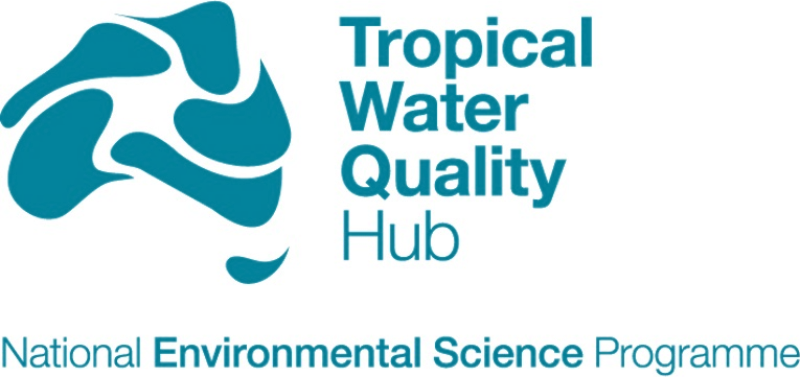Science Partnerships Section
Type of resources
Topics
Keywords
Contact for the resource
Provided by
status
-

This metadata is a brief overview of the National Environmental Science Program Tropical Water Quality (NESP TWQ) Hub. The aim of the National Environmental Science Programme (NESP) is to assist decision-makers to understand, manage and conserve Australia’s environment by funding world-class biodiversity and climate science. The National Environmental Science Programme is delivered through six research hubs: * Clean Air and Urban Landscapes Hub, * Earth Systems and Climate Change Hub, * Marine Biodiversity Hub, * Northern Australia Environmental Resources Hub, * Threatened Species Recovery Hub * Tropical Water Quality (TWQ) Hub The NESP TWQ Hub is the largest of the hubs and provides innovative research for practical solutions to maintain and improve tropical water quality from catchment to coast under three research themes: * Theme 1 – Improved understanding of the impacts, including cumulative impacts, and pressures on priority freshwater, coastal and marine ecosystems and species * Theme 2 – Maximise the resilience of vulnerable species to the impacts of climate change and climate variability by reducing other pressures, including poor water quality * Theme 3 – Natural resource management improvements based on sound understanding of the status and long-term trends of priority species and systems Each theme is broken down into a number of projects, each of which has an experienced Program Leader. The NESP is built on lessons learned from the National Environmental Research Program (NERP) which concluded in 2014. The funding for the NESP TWQ program is provided in a number of rounds. Round 1 (June 2015 - Mar 2016) This round funded 25 short term projects starting in June 2015. All projects were completed by March 2016. Many of the projects were associated with desktop studies, synthesis of historic work or workshops to facilitate planning of future research. A few of the projects were continuation of long running monitoring projects including the AIMS LTMP, the JCU inshore coral reef monitoring and the eAtlas. Round 2 (Jan 2016 - Dec 2018) The NESP Round 2 research projects aligned with the priorities of the Reef 2050 Long Term Sustainability Plan and Reef Trust. This round consisted of multi-year project funding which commenced in January 2016, and funded 18 projects. The projects are aligned with the 3 NESP research themes and were grouped under 7 priorities: * Priority 1: Reducing water quality impacts: Identify and prioritise practical management actions capable of protecting and improving water quality in the Great Barrier Reef region. * Priority 2: Water quality monitoring and reporting * Priority 3: Protecting the Reef: Crown-of-thorns starfish * Priority 4: Reducing potential impacts: Dredging activity * Priority 5: Impact of water quality and climate factors on economically relevant reef species * Priority 6: Protection of identified Reef systems of high biodiversity value * Priority 7: Supporting traditional co-management Round 3 (Jan 2017 - Dec 2019) The NESP Round 3 research projects commenced in January 2017, with research priorities were further narrowed via consultations with end users, stakeholders and the Department of Environment and Energy. The 15 projects funded for Round 3 grouped under three key priorities: * Priority 1: Water Quality Improvement * Priority 2: Improved Monitoring/Reporting/Assessment * Priority 3: Improved Management of Key Species/Habitats Round 4 (Jan 2018 - Dec 2020) The NESP Round 4 projects commenced in January 2018. This round responded to the significant events in the Great Barrier Reef in 2006-2017 including mass coral bleaching and impacts of Cyclone Debbie. The focus of the NESP TWQ hub projects shifted towards direct intervention and management in the marine environment. All projects are aligned with the 3 NESP research themes, with higher priority given to specific issues. Additionally, 4 cross cutting issues were highlighted and integrated across multiple NESP hubs. These cross-cutting issues are: * 1. consider current and future climate risks in the research design, delivery and recommendations, as appropriate, as recommended by the State of the Environment Report 2016 * 2. consider the social and economic value of the environmental asset/s and research outcomes, as appropriate * 3. where possible, and where other considerations are equal, be targeted at areas with high conservation value such as National and World Heritage places and Ramsar wetlands * 4. be designed with consideration of how it may intersect and integrate with the priorities of other NESP hubs. For the Round 4 research plan, the 12 projects can be grouped under three headings: * 1. Supporting Direct Interventions in the Marine Environment * 2. Informing Reef Management in a Post-Bleaching/Increased Cyclone Frequency World * 3. Improving Water Quality Emanating from Catchments Round 5 (Jan 2019 - Dec 2020) Round 5 projects continue to focus on the research priorities outlined in Round 4. Many of the 15 projects in this round are extensions to previously completed or existing projects under previous rounds. Full project details and reports from each Round can be found on the NESP TWQ website. The eAtlas has project pages for those projects that produced new datasets that have been published in the eAtlas. Data Location: the datasets generated from each project are saved in the eAtlas enduring repository at e-atlas\data\NESP-TWQ-(1-5). All NESP TWQ data is available for download from the eAtlas
 eAtlas Data Catalogue
eAtlas Data Catalogue